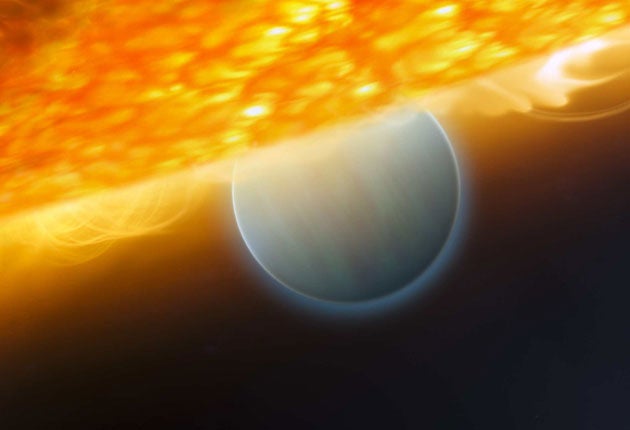Is there life on planet HD 189733b?
Discovery of water and carbon dioxide on planet 63 light years away raises tantalising prospect

Never mind whether there is life on Mars, is there life on planet HD 189733b? That is the question raised by the discovery of some of the building blocks of life on one of the closest known planets orbiting a star other than our own sun.
Astronomers said yesterday they have detected water and carbon dioxide – key signs of life – in the atmosphere of HD 189733b, which orbits a star 63 light years away from Earth in the constellation Vulpecula.
The planet is one of about 300 "exoplanets" that have now been detected beyond our own solar system since the first was identified in 1995. Scientists believe it could only be a matter of time before they find one similar in size and composition to Earth.
Although they are excited about their ability to detect biologically-important molecules so far away in space, they are more sanguine about the prospects of life on a planet that is only known by its code name.
HD 189733b is believed to be a "gas giant" planet similar in size to Jupiter and, as such, is thought to be a hostile environment for life. Its close orbit around its sun is not conducive to living organisms, which are highly unlikely to survive the daytime temperatures of more than 1,000C.
But astronomers believe the techniques that revealed the presence of water and carbon dioxide on such a distant planet will soon lead them to discovering the signs of extraterrestrial life on a more Earth-like planet where living organisms are able to thrive.
"The carbon dioxide is the main reason for the excitement," said Mark Swain, a research scientist at Nasa's Jet Propulsion Laboratory in Pasadena, California.
In a separate study, published in the journal Nature, a team from the California Institute of Technology in Pasadena has found the signature of water vapour in the superheated atmosphere of the same planet.
Join our commenting forum
Join thought-provoking conversations, follow other Independent readers and see their replies
Comments
Bookmark popover
Removed from bookmarks